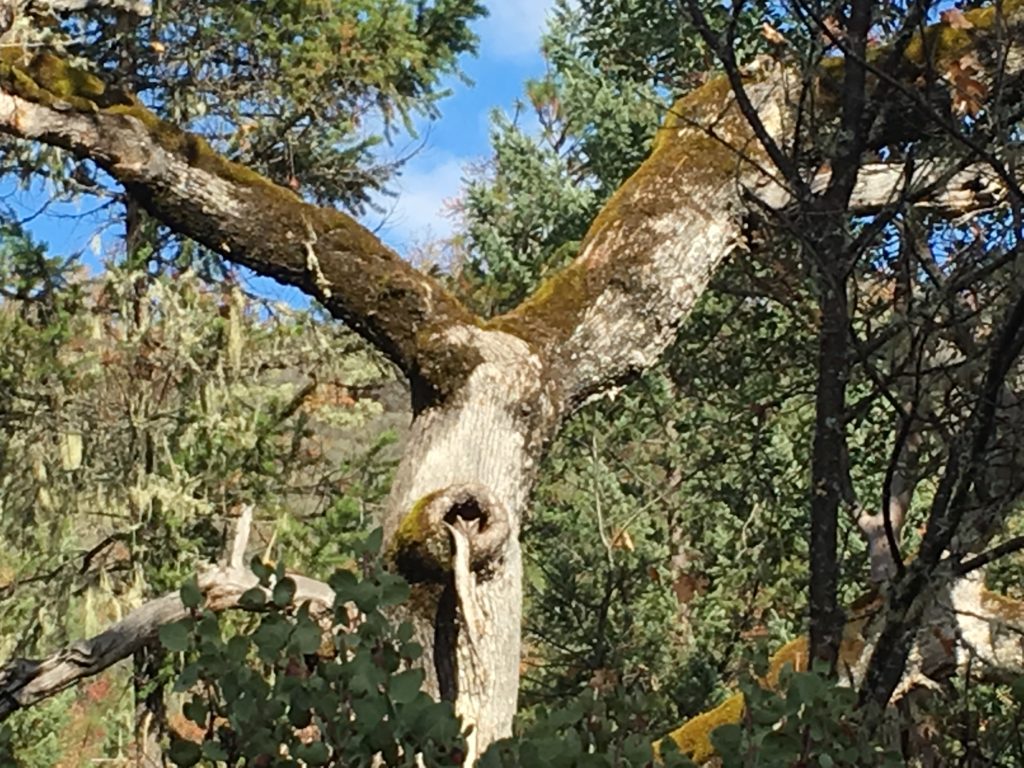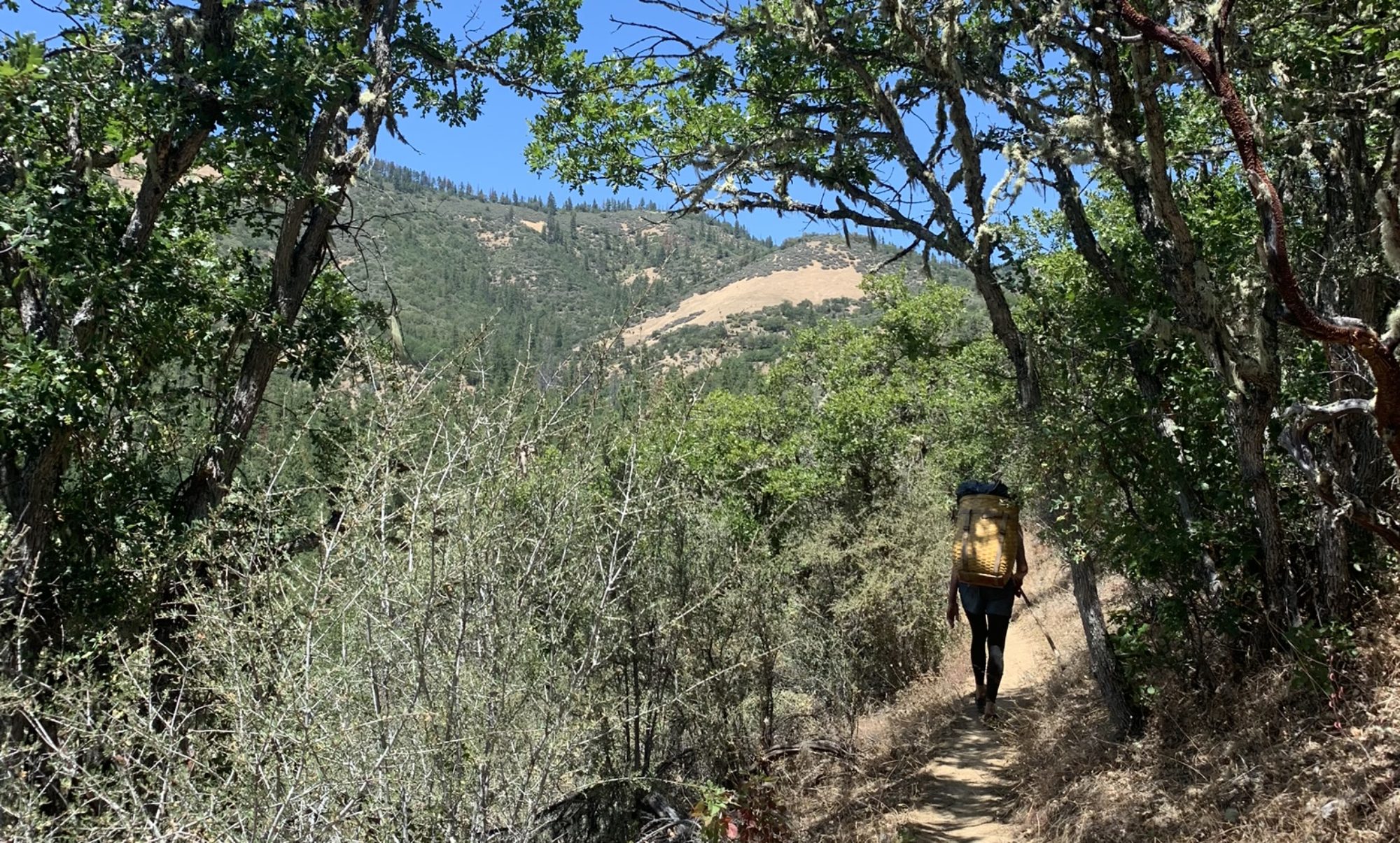An essay by Tomi Hazel Vaarde, September 2019, Little Wolf Gulch.

In The White Goddess by Robert Graves (1948, especially pages 65, 66, 70, 387) the author unwraps layers and layers of stories to reveal the essential triple-ness of the Oak associated goddesses. As acorns were the staple of early Humans, and the open (regularly burned) savanna was the comfortable and familiar landscape, the earliest understandings were ecological and pertinent to thrivance. As the White Oak group world-wide is known to have a very high number of ecological associates, the Oak tree is referred to as “highly implicate”. She has more relationships with more entities than any other tree. One could say that “she rents out rooms”.
The species of the White Oaks group are found all across the temperate zones of the northern hemisphere. In Oregon it is represented by the Garry Oak or Oregon White Oak (Quercus garryana), in Europe it is Quercus alba. In Japan a species of White Oak is used to make the ceremonial tea charcoal. The White Oak is consistently associated with a vengeful protective goddess. The Gaelic and classic traditions of Europe call her the White Goddess (Diana), and the Triple Goddess. The Pacific slope tribes refer to her as Acorn Woman.
The megalithic or chthonic meanings of Triple Goddess have to do with the stages of women’s lives. The girl, the woman, and the hag. As farming replaced tending the wild, the names and references shifted to the elements of farming, but the ecological imports remain. As the White Oak holds together the ecosystems that supported and inspired Human cultures for thousands of years, so our poetic memory reminds us of our real work. Humans can facilitate fertility, resilience and abundance through cooperating with All Sentient Beings. How we acknowledge and reciprocate that work-together or cooperation-with-complexity bears on how we treat each other as Humans, too.
Within many cultures, through many periods of ecocide and genocide, the stories of the White Oak persist and enlighten. She is the White Goddess in triple form, do not mess with her or you will suffer. She is brutally honest and quick to punish; some stories of Diana say that she is merciful in killing. She does not mess around. Holding any remnant of this ascription-story should keep us tied to deep-time truths. This continuity is a central player in our time on the planet and White Oak is so tied up in all our stories and survivals that we need to keep telling the stories and preserving the savanna.
The images that associate with the White Oak include the Horse or Pony, the goddess Epona. The Mulberry is the triple goddess’ tree of abundant food. The changes of the Moon are as central as the three stages of womanhood, she is new, then full, then waning, and all over again. The colors are white, red, and black (or deep blue). The trees are Willow, Oak and Hazel. Some archeology finds those charcoals under ceremonial sites. The early agricultural goddesses are Ceres, Venus, and Phoebus (or Persephone): grain, love and herbs. Our experienced world is seen as triple: underworld, earth, and sky.
The modern poetic tradition, led by this primer from Robert Graves, and reinforced by subsequent research and cross-cultural conversation, talks of Diana, the Huntress; Aphrodite, Beauty and Abundance; Hecate, the Herbalist (among this one’s jobs is taking things down). As women say “we bring them in, raise them up, and take them out”. This is our Human chore, mostly carried by women over all the millennia of our stories. Round and round. Like an acorn, or the curved lobes of the White Oak leaf, or the hollow dark cavity, or the fat white sun-lit bole of a very old Oak.
